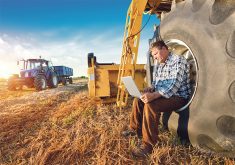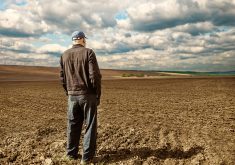“It looks good, but I would stay away from those openers, if I were you,” said one farmer.
“Check the tank. That model has one that is prone to rust,” cautioned another.
“Ooh. Poly packers. You can do what you want, but I used those once, and they didn’t properly close the rows,” said someone whose opinion I trust.
My favourite used equipment comment, either solicited or unsolicited, is, “that thing will give you nothing but problems.”
Here I am, surfing websites, naively believing I am being proactive by compiling a list of affordable capital investment considerations when it’s clear all I am really doing is teetering on a decision that would finally out me as a fraud of a farmer.
Read Also

Kochia has become a significant problem for Prairie farmers
As you travel through southern Saskatchewan and Alberta, particularly in areas challenged by dry growing conditions, the magnitude of the kochia problem is easy to see.
At least, that’s what those comments would have me believe.
Investing in used machinery may not be so dramatic for most of you but for me, these decisions are not easy.
It’s an appealing idea to have an established rubric through which farm investment decisions can be made. I’d estimate well over half the farmers with whom I have discussed potential purchases would proudly describe what they think are the most important considerations for decisions related to large farm expenditures.
Of those people, fewer than a third make decisions the way they advise me to do.
Observing this is a gift and a curse. I may see what’s really going on, but it’s not helping me arrive at better decisions.
We have and still use a hoe drill to seed our crops, except for canola. The drill works well. Sometimes very well. The machine couldn’t be any simpler. I wouldn’t be surprised if, in my lifetime, there will be a massive tech correction and implements like our hoe drill will be heralded as a symbol of the golden age of seeding equipment.
But it’s old. It won’t last forever and I am starting to fear my inability to decide on its successor is holding back my farm in quantifiable ways. Are we losing yield to uneven seed placement? Wasting seed on miscalculated rates?
My wife and I started watching the Netflix series Formula 1: Drive to Survive, which has compelling, binge-worthy narratives.
In a short YouTube video, Formula 1 engineer James Allison gives viewers a brief walkthrough of a Mercedes car and illustrates the attitude that pushed the company to take an already winning design and rebuild it into something better.
“The temptation for us was to just to keep polishing that one,” said Allison, pointing to the 2019 car. “After all, it finished the season really strongly and it was developing really fast all the way through the year, so there was still lots of opportunity to make that one quicker.
“That conservative approach was very, very tempting. But in the end, we decided that wouldn’t be enough. We would take every part of the car and challenge ourselves to see if we could make it better.”
The similarities between our hoe drill and that car are few, but I appreciate Allison’s comment about not being content with “good enough.” By that same rationale, farmers can stay the same or push themselves to stay ahead.
All of this muddies what should be a simple decision to buy a used air seeder and I’m not yet sure what I will do. This farm, like yours, has other looming needs.
In the meantime, I’ll continue to pursue a practical and believable rubric for decisions.
Toban Dyck farms in southern Manitoba and shares his thoughts through media platforms.

















